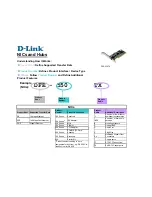
Track an IPv4/IPv6 Route
You can create an object that tracks the reachability or metric of an IPv4 or IPv6 route.
You specify the route to be tracked by its address and prefix-length values. Optionally, for an IPv4 route, you
can enter a VRF instance name if the route is part of a VPN routing and forwarding (VRF) table. The next-hop
address is not part of the definition of a tracked IPv4/IPv6 route.
In order for an route’s reachability or metric to be tracked, the route must appear as an entry in the routing
table. A tracked route is considered to match an entry in the routing table only if the exact IPv4 or IPv6
address and prefix length match an entry in the table. For example, when configured as a tracked route,
10.0.0.0/24 does not match the routing table entry 10.0.0.0/8. Similarly, for an IPv6 address,
3333:100:200:300:400::/80 does not match routing table entry 3333:100:200:300::/64. If no route-table
entry has the exact IPv4/IPv6 address and prefix length, the tracked route is considered to be DOWN.
In addition to the entry of a route in the routing table, you can configure the UP/DOWN state of a tracked
route to be determined in the following ways:
• By the reachability of the route's next-hop router.
The UP/DOWN state of the route is determined by the entry of the next-hop address in the ARP cache.
A tracked route is considered to be reachable if there is an ARP cache entry for the route's next-hop
address. If the next-hop address in the ARP cache ages out for a route tracked for its reachability, an
attempt is made to regenerate the ARP cache entry to see if the next-hop address appears before
considering the route DOWN.
• By comparing the threshold for a route’s metric with current entries in the route table.
The UP/DOWN state of the tracked route is determined by the threshold for the current value of the
route metric in the routing table.
To provide a common tracking interface for different clients, route metrics are scaled in the range from
0 to 255, where 0 is connected and 255 is inaccessible. The scaled metric value communicated to a
client always considers a lower value to have priority over a higher value. The resulting scaled value is
compared against the configured threshold values to determine the state of a tracked route as follows:
• If the scaled metric for a route entry is less than or equal to the UP threshold, the state of a route is
UP.
• If the scaled metric for a route is greater than or equal to the DOWN threshold or the route is not
entered in the routing table, the state of a route is DOWN.
The UP and DOWN thresholds are user-configurable for each tracked route. The default UP threshold is
254
; the default DOWN threshold is
255
. The notification of a change in the state of a tracked object is
sent when a metric value crosses a configured threshold.
The tracking process uses a protocol-specific resolution value to convert the actual metric in the
routing table to a scaled metric in the range from 0 to 255. The resolution value is user-configurable
and calculates the scaled metric by dividing a route’s cost by the resolution value set for the route type:
• For ISIS, you can set the resolution in the range from 1 to 1000, where the default is
10
.
• For OSPF, you can set the resolution in the range from 1 to 1592, where the default is
1
.
• The resolution value used to map static routes is not configurable. By default, Dell Networking OS
assigns a metric of 0 to static routes.
Object Tracking
702
Содержание S4048T
Страница 1: ...Dell Configuration Guide for the S4048T ON System 9 10 0 1 ...
Страница 98: ... saveenv 7 Reload the system uBoot mode reset Management 98 ...
Страница 113: ...Total CFM Pkts 10303 CCM Pkts 0 LBM Pkts 0 LTM Pkts 3 LBR Pkts 0 LTR Pkts 0 802 1ag 113 ...
Страница 411: ...mode transit no disable Force10 Resilient Ring Protocol FRRP 411 ...
Страница 590: ...Figure 67 Inspecting the LAG Configuration Link Aggregation Control Protocol LACP 590 ...
Страница 591: ...Figure 68 Inspecting Configuration of LAG 10 on ALPHA Link Aggregation Control Protocol LACP 591 ...
Страница 594: ...Figure 70 Inspecting a LAG Port on BRAVO Using the show interface Command Link Aggregation Control Protocol LACP 594 ...
Страница 595: ...Figure 71 Inspecting LAG 10 Using the show interfaces port channel Command Link Aggregation Control Protocol LACP 595 ...
Страница 646: ...Figure 87 Configuring Interfaces for MSDP Multicast Source Discovery Protocol MSDP 646 ...
Страница 647: ...Figure 88 Configuring OSPF and BGP for MSDP Multicast Source Discovery Protocol MSDP 647 ...
Страница 648: ...Figure 89 Configuring PIM in Multiple Routing Domains Multicast Source Discovery Protocol MSDP 648 ...
Страница 653: ...Figure 91 MSDP Default Peer Scenario 2 Multicast Source Discovery Protocol MSDP 653 ...
Страница 654: ...Figure 92 MSDP Default Peer Scenario 3 Multicast Source Discovery Protocol MSDP 654 ...
Страница 955: ...Figure 119 Single and Double Tag First byte TPID Match Service Provider Bridging 955 ...
Страница 1179: ...Figure 147 Create Hypervisor Figure 148 Edit Hypervisor Figure 149 Create Transport Connector Virtual Extensible LAN VXLAN 1179 ...















































